I’ve had some questions about the bokeh of the Fujifilm 45-100 mm f/4. There are two aspects to bokeh.
- The first is relatively simple: how do the far-out-of-focus point spread functions (PSFs) vary across the frame, and what it their nature? That’s what determines the bokeh characteristics of the background on a wide-open, close-range portrait.
- The second is quite complex, by virtue of an additional dimension: how does the nature of the point spread function vary through the in-focus plane, and how does that vary across the frame?
We can look at the first question by making out of focus images of a point source at various places in the frame. For this test, I used an artificial star with a 100 um aperture, gelled to reduce some of the blueness of the LED. Target distance is about 7 meters, and the lens was focused to one meter.
Here is a one-quadrant composite at 45 mm and f/4 (the center of the frame is the upper-right blob) with the GFX 100:
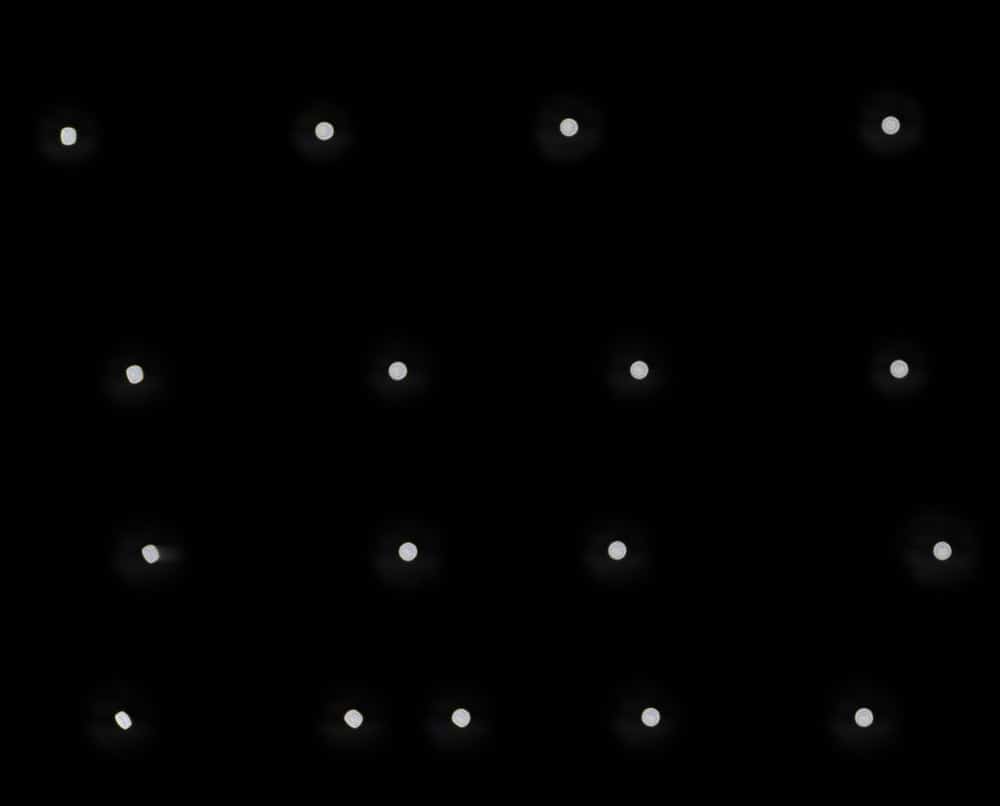
There is some onion-layering. The good news is that we don’t get mechanical vignetting until the star is fairly far off-axis.
Here is a set at 100 mm:
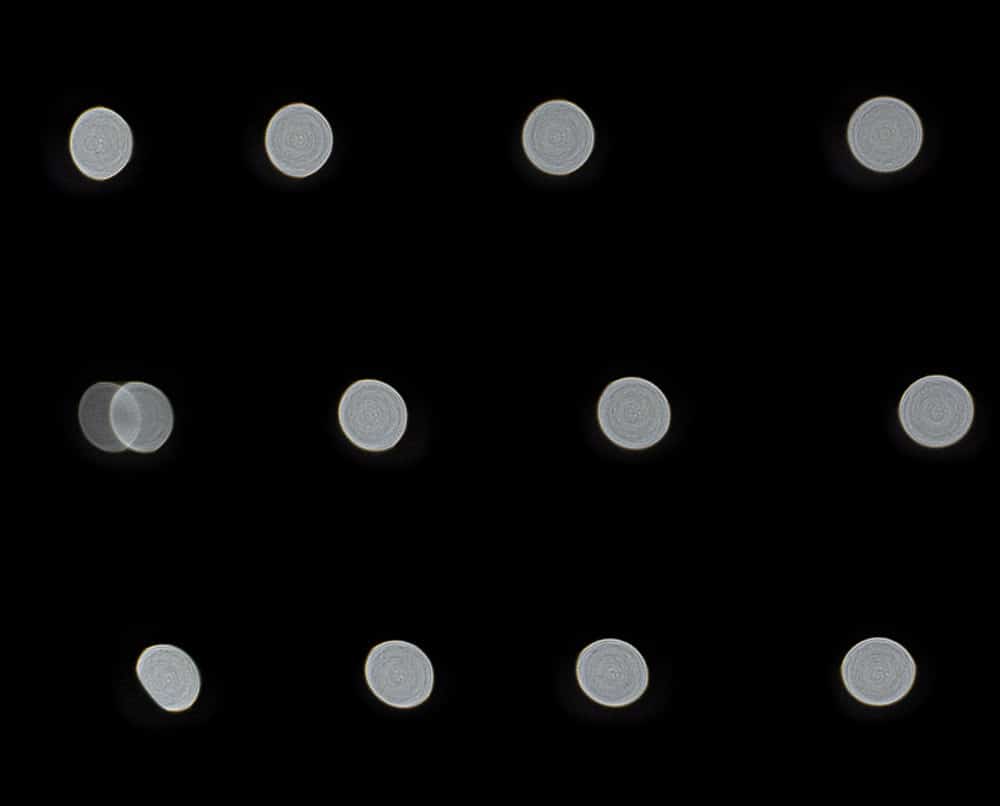
Oops! I must have jostled the camera when making the exposure for the middle row on the far left. You can see more onion-ringing because the blobs are further out of focus at 100 mm.
I’m only going to look at the through-focus PSFs on axis. It’s pretty easy to set up the GFX 100 to do the through-focus captures, since it has focus bracketing. Here’s at set at 45 mm and f/4, with the step size set to 4. Left-to-right, top-to-bottom, in order of moving the object focus plane away from the camera.

And here’s a set at 100 mm and f/4, with the same step size:
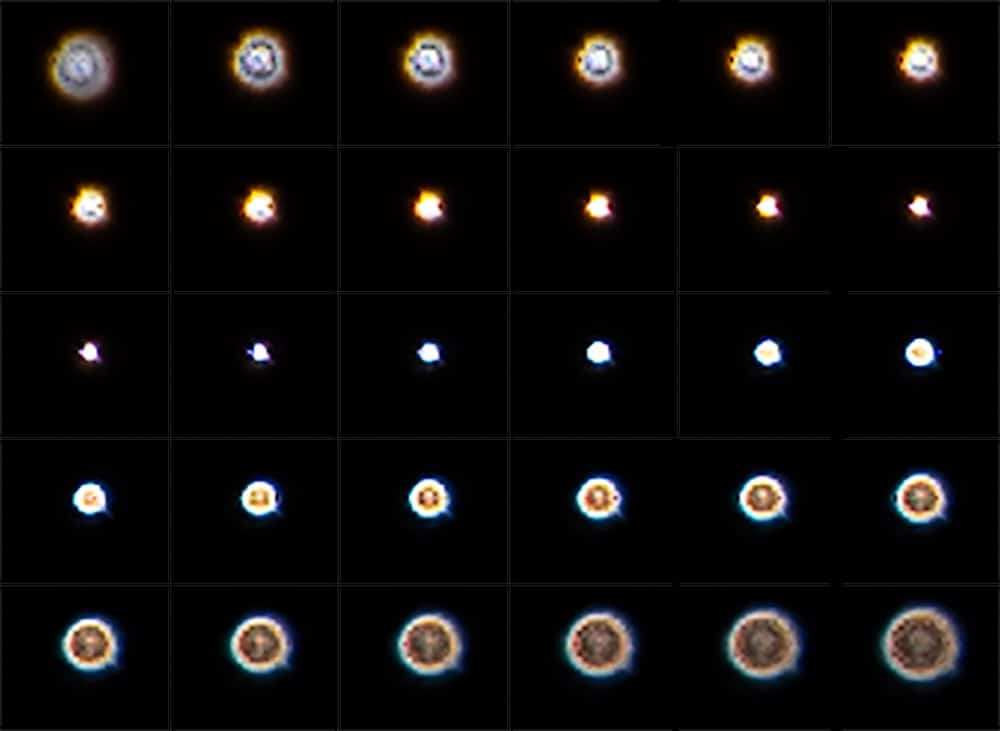
What should these look like? Here’s a set with the Fuji 110/2 (with the focal plane on the far side of the subject); the 110/2 is known to have excellent bokeh:
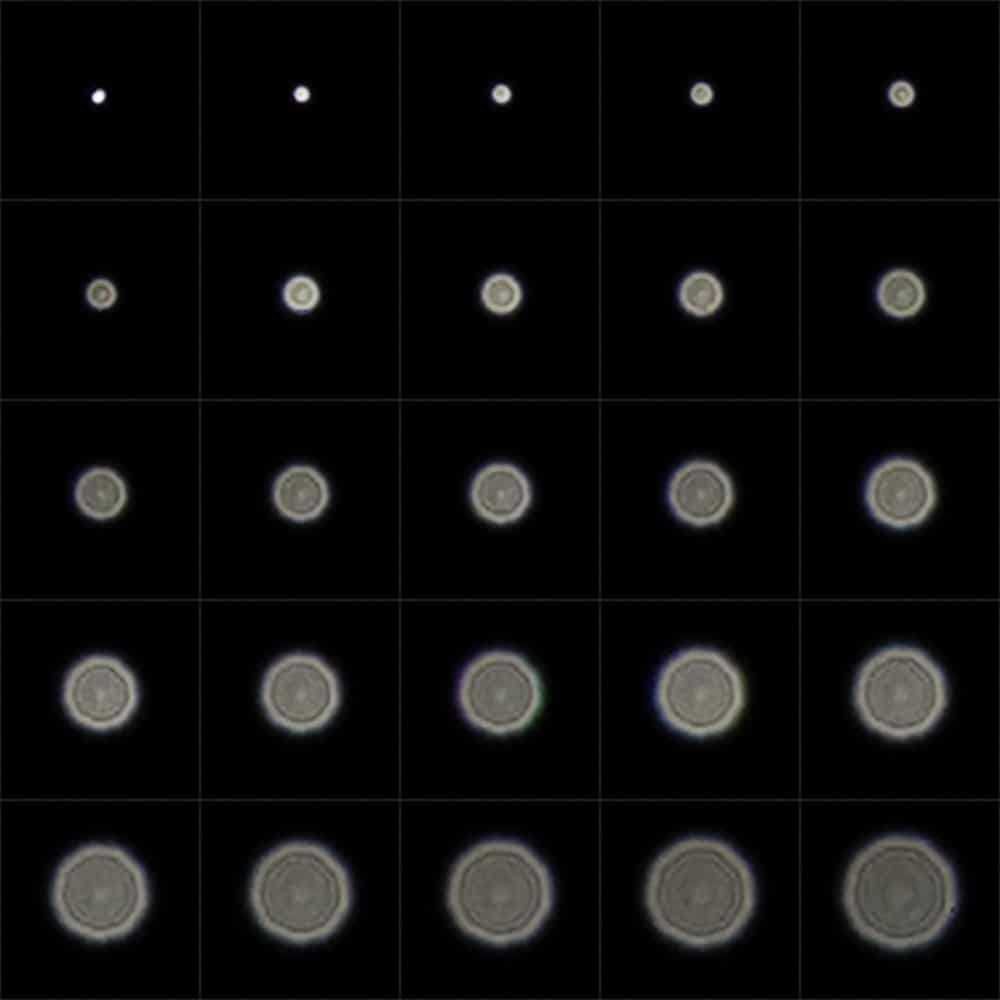
There’s a lot less color in the 110 shots, and less variation within the PSF disc.
In case you’re interested, here is what a perfect, diffraction-limited lens on a near-continuous resolution sensor with the same pixel aperture as the GFX 100 looks like in green monochromatic light.
First, in focus:
Slightly out of focus:
More out of focus:
Still more out of focus:
And even more out of focus:
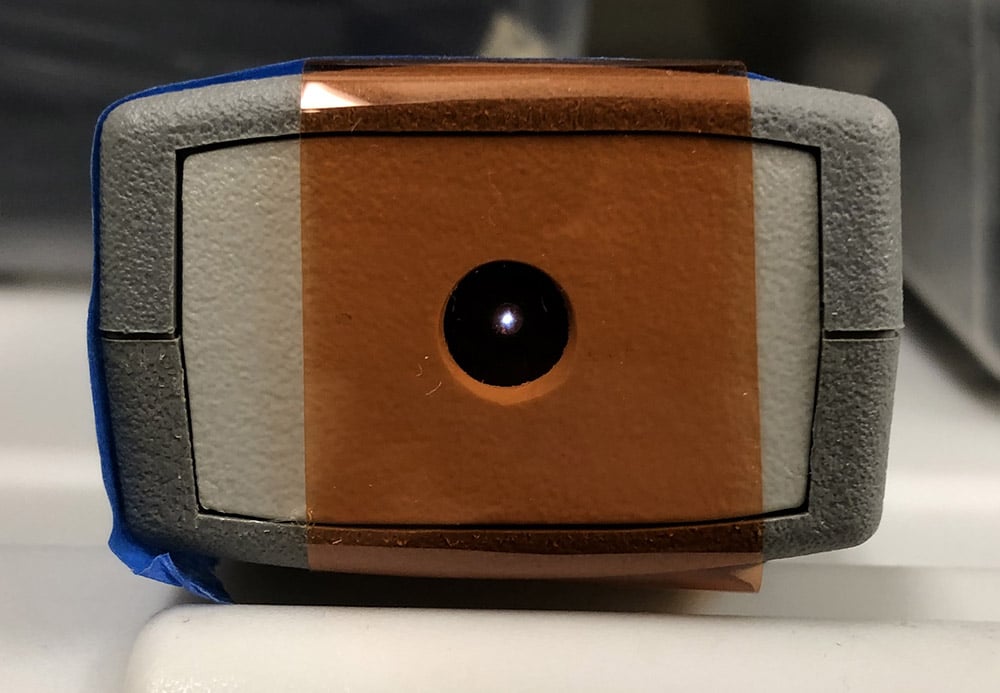
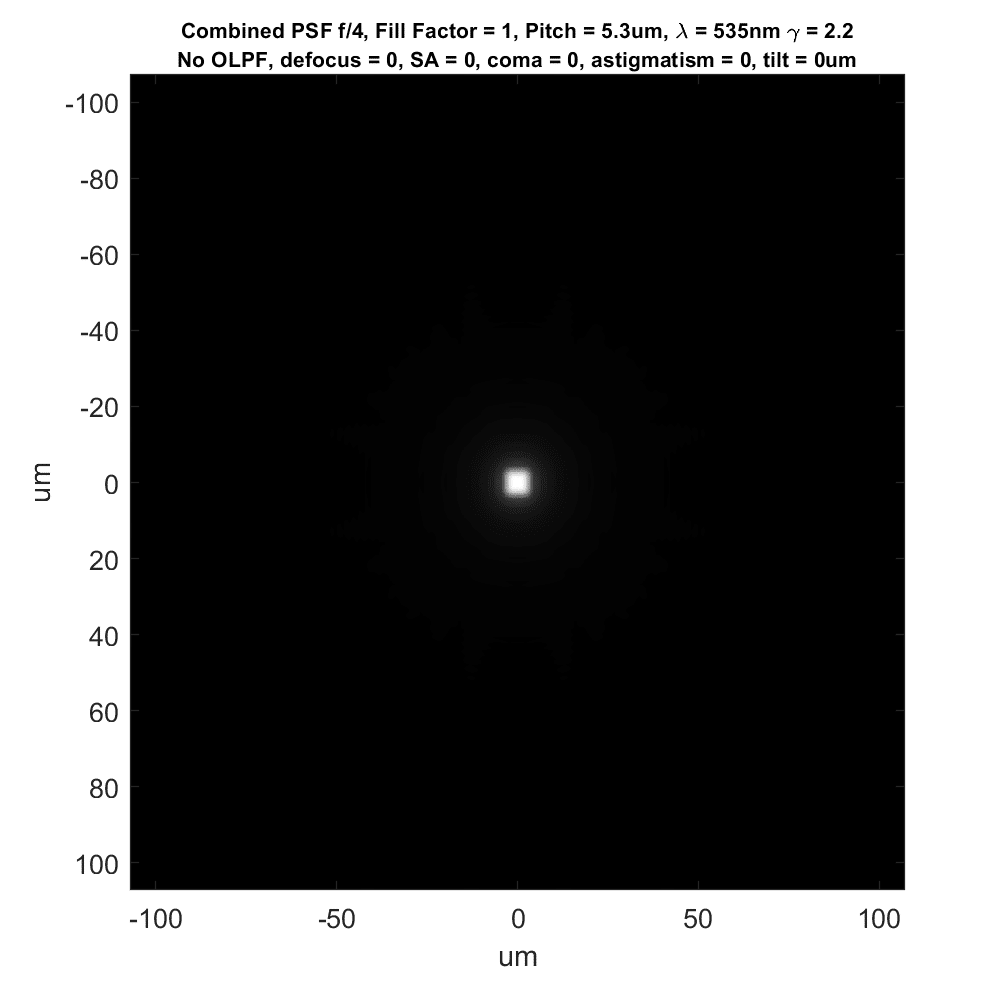
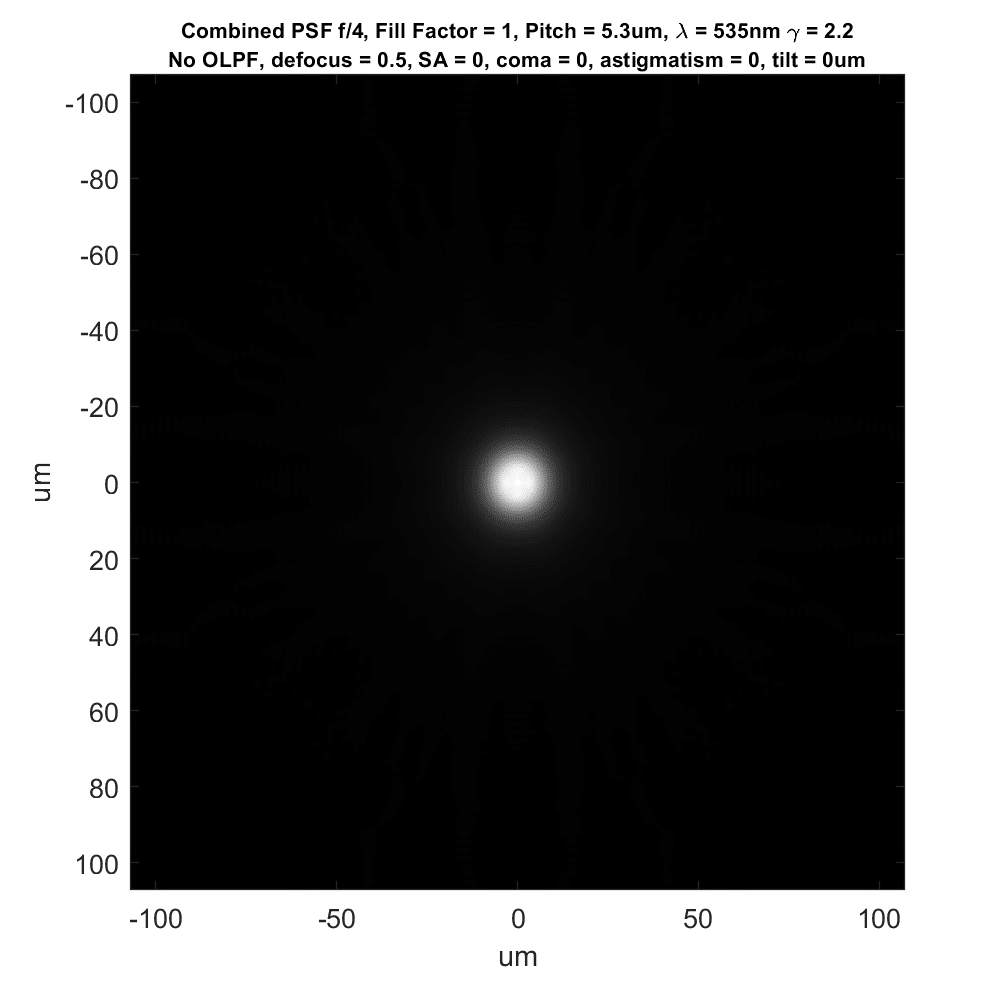
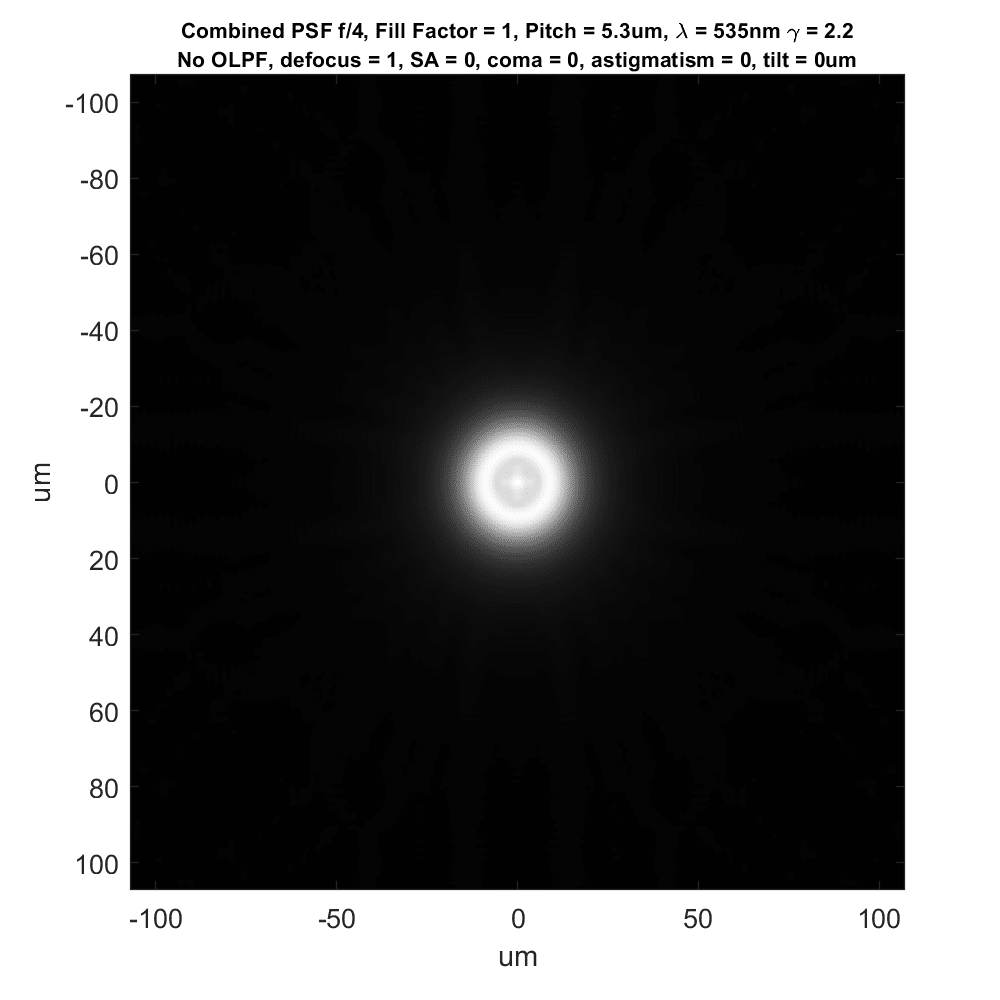
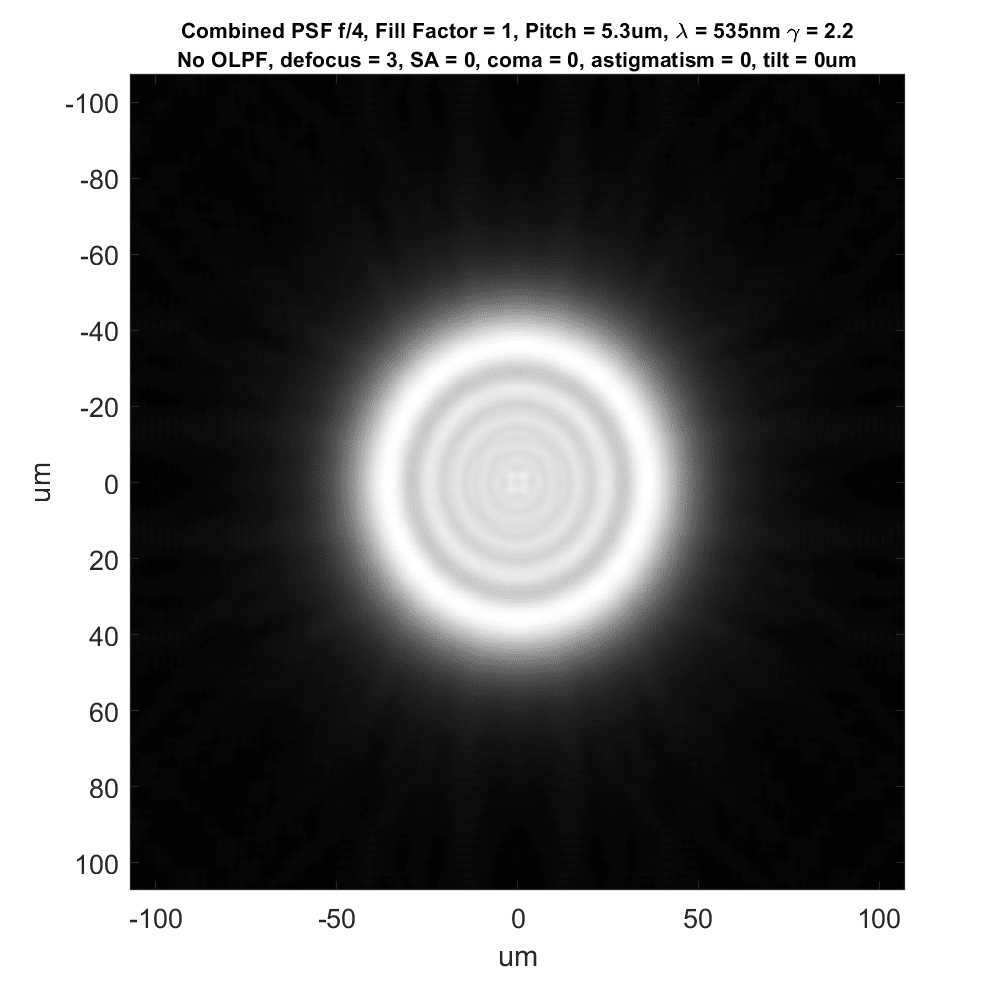
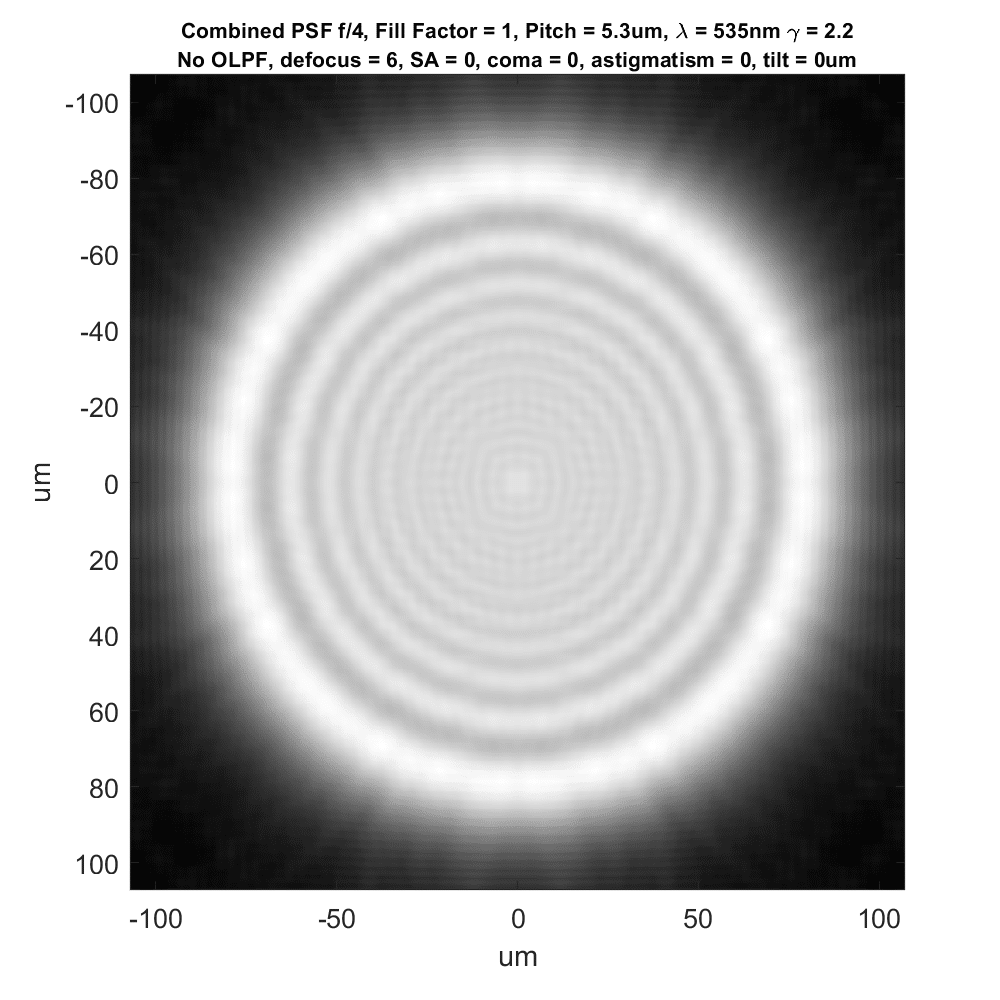
Erik Kaffehr says
Hi Jim,
Out of focus rendition is not one of my great interests, but it is very nice to see that we can see similar characteristics in your models to what we can see in your real lens PSF images. Great work and thanks for sharing!
Thanks also good people, Jack, Marianne, Iliah, Brandon and all didn’t mention who constribute to good discussions. Nice to have a community of knowledgeable people, helping out when they can.
Brandon Dube says
You could do phase retrieval with the actual PSFs. There are a lot of challenges in data like this, notable:
– bad Q (<< 1)
– polychromatic
– finite distances change the math a little bit and require more than the usual level of care about conjugation
– unknown F/# (though calibrate-able)
If Jim wanted to take a crack at it I could help, but it's probably circa ~70 hours of work to stand up phase retrieval for the first time and run it on such challenging data.